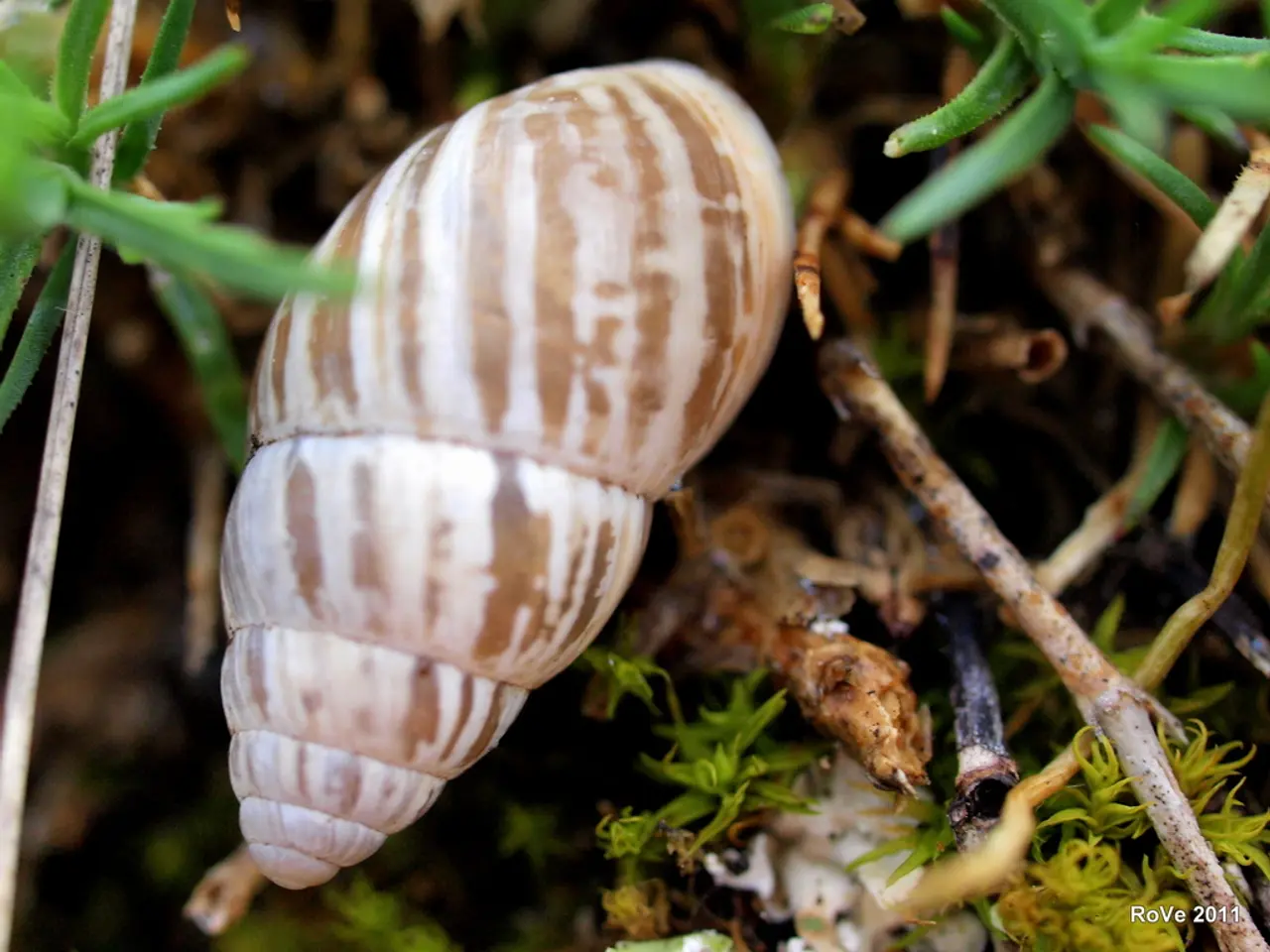Isopods and Springtails in Terrariums: A Guide to Biologically Active Combinations 101
In the world of terrariums and vivariums, a harmonious balance of life forms can create a self-sustaining ecosystem. Two such creatures, Isopods and Springtails, work together to maintain a clean and thriving environment.
Isopods, often referred to as woodlice, are recyclers par excellence. They feed on decaying plant material and waste, breaking down detritus and recycling nutrients back into the substrate. Springtails, on the other hand, primarily control mold and decomposing organic matter, helping to prevent fungal growth.
To create a successful bioactive terrarium or vivarium, it's essential to establish a balanced population of these microfauna. Start with at least 10–15 Isopods to establish a stable colony, while Springtails multiply quickly and require a smaller initial number.
The substrate should be rich in organic matter such as peat moss, sphagnum moss, and leaf litter, essential for Isopod thriving and breeding. A thick layer of leaf litter should be maintained at all times, serving as food and habitat for both species.
Maintaining a moist environment is crucial, with ideal humidity ranging from 25% to 60%. Temperature-wise, most Isopods thrive between 65°F to 85°F (18°C to 29°C), while Springtails prefer similar conditions.
Isopods and Springtails coexist well in the same enclosure, complementing each other’s roles in waste breakdown. This synergy helps reduce maintenance and keeps the terrarium naturally cleaner.
Avoid using chemical pesticides or fungicides that could harm these microfauna. Ensure there is no over-cleaning or substrate replacement that disrupts their populations. Adding natural wood pieces and safe plants offers microhabitats that support their lifecycle.
One of the most common and well-regarded species of Springtails in the terrarium industry is the Temperate White Springtail (Folsomia candida), adapting easily to various environments. For tropical terrariums, Tropical White Springtails (Collembola sp) are a common choice, thriving in higher temperatures.
Another useful addition to the terrarium or vivarium is the Isopod Superfood Blend, a nutrient-packed food option for both Isopods and Springtails. However, it's important to note that adding fruit and vegetables to feed Isopods can lead to mold eruptions, making Springtails a valuable addition in controlling these outbreaks.
In a reptile vivarium, Isopods can serve as a healthy snack, while Springtails reportedly eat Isopod frass, helping to further spread nutrients to plants in the terrarium or vivarium.
By introducing a balanced population of Isopods and Springtails, maintaining moist, organic-rich substrate with proper temperature and humidity, and providing ample leaf litter, you establish a self-sustaining, low-maintenance bioactive terrarium or vivarium that recycles waste and supports healthy soil ecology.
- The science behind creating a self-sustaining ecosystem in terrariums involves carefully balancing various life forms, including Isopods and Springtails.
- In environmental-science, Isopods, also known as woodlice, play a crucial role in breaking down decaying organic matter and recycling nutrients.
- Springtails, on the other hand, are mainly responsible for controlling mold and decomposing organic matter in terrariums.
- To create a successful bioactive terrarium or vivarium, it's important to have a balanced population of these microfauna, with at least 10-15 Isopods and an initial smaller number of Springtails.
- The substrate, rich in organic matter such as peat moss, sphagnum moss, and leaf litter, is essential for Isopod thriving and breeding.
- Leaf litter should be maintained in a thick layer as it serves as food and habitat for both species.
- Maintaining a moist environment with humidity ranging from 25% to 60% is crucial for the survival of both Isopods and Springtails.
- Temperature-wise, Isopods thrive between 65°F to 85°F (18°C to 29°C), while Springtails prefer similar conditions.
- Isopods and Springtails coexist well in the same enclosure, their roles complementing each other in waste breakdown.
- Chemical pesticides and fungicides should be avoided to preserve these microfauna populations.
- Over-cleaning or substrate replacement can disrupt the populations of Isopods and Springtails.
- Adding natural wood pieces and safe plants offers microhabitats that support their lifecycle.
- The Temperate White Springtail (Folsomia candida) is a common and well-regarded species of Springtails in the terrarium industry.
- For tropical terrariums, Tropical White Springtails (Collembola sp) are a commonly used choice.
- The Isopod Superfood Blend is a nutrient-packed food option for both Isopods and Springtails.
- Feeding Isopods with fruits and vegetables can lead to mold eruptions, making Springtails a valuable addition in controlling these outbreaks.
- In a reptile vivarium, Isopods can serve as a healthy snack, while Springtails reportedly eat Isopod frass, helping to spread nutrients to plants.
- By establishing a balanced population of Isopods and Springtails and maintaining the appropriate substrate, temperature, humidity, and leaf litter, you can create a self-sustaining, low-maintenance bioactive terrarium or vivarium.
- This self-sustaining ecosystem recycles waste and supports healthy soil ecology.
- In the realm of finance, establishing a balanced population of Isopods and Springtails in a terrarium mirrors the importance of diligent savings (Isopods) and smart investments (Springtails) in managing wealth.
- Just as Springtails prevent mold and fungal growth in a terrarium, effective cybersecurity prevents digital threats from affecting one's personal or financial data.
- A well-maintained terrarium with Isopods and Springtails can serve as a metaphor for a harmonious, low-maintenance lifestyle.
- Similarly, the balance between Isopods and Springtails represents the synergy between various components in the field of artificial intelligence, contributing to advancements in technology and sports-analysis.








